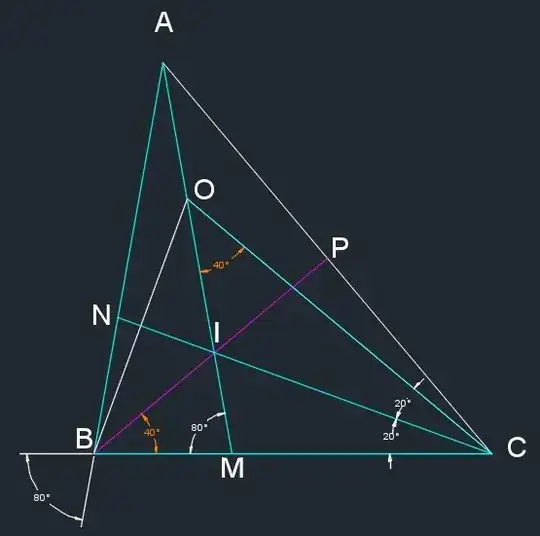I encountered the following problem in a math problem book, in a section, entitled Geometry.
In an $\Delta ABC$ with $AB=BC$ and $\angle ABC = 80^\circ$, the point $O$ is chosen so that $\angle OAC = 30^\circ$ and $\angle OCA = 10^\circ$. Find $\angle BOC$.
I struggled repeatedly trying to solve this using some reasonable selection of methods, and failed utterly. I can construct a solution using analytic geometry, but that is not a fair choice of methods for this section.
From simple geometry, I keep writing down systems of equations using various triangles in the picture, and always keep missing one constraint, as it seems there are infinite amount of solutions to the system, which I know is wrong since the analytic geometry approach yields a unique solution.
I am happy to add my infinite solution approach using the angle constraints, if you find it helpful. Please let me know if that's the case.
I would like to solve this using methods from geometry, without using more advanced techniques. Thank you very much, I really appreciate your help.

